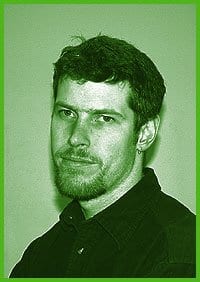On a first read, one might think that Bill Brown is simply writing about everyday lives.
In his first collection of stories, Folly, Brown establishes a double-entendre with the title story. Eric and David, two teenage boys, build a fort and spend hours doing what boys do – wasting time and getting in and out of trouble. David’s mother names their construction a folly – and a ramshackle one at that, which mayslip down into the river at any time. The fort is a temporary construct, as are the boys’ peaceful summer days. They play make-believe – pretend to be Tarzan swinging from vines, and perform elaborate plays.
Eric and David are in the midst of another jungle – puberty – discovering themselves and each other. Their fun and games take place in the forgotten world of children, where bullies and older brothers intimidate and part-time jobs are clear enemies of leisure. Folly is a story about pretendingin the midst of odds – a makeshift fort, a homophobic neighborhood and the disdainful rumours surrounding David’s family. The boys discover what growing up means to their friendship.
Some of the stories are easier reads than others.
The story Lucky Stars is somewhat confusing. The main character, Martha, loses her husband, James, to a freak accident many years after he had an accident while driving the tractor. Their gay son, Andrew, visits to help out with the funereal details. While Brown doesn’t plainly say that Andrew is gay, there is one description that gives it away; the mother and son used to breeze down the highway with Mozart or Debussy playing on the radio.
Martha must throw away her husband’s old possessions, and discovers along the way that she didn’t really know James. The story jumps between several timelines, from their marriage to raising their son, whose talent as a painter is a sore point with the homophobic James, to the present mother-son reunion, to James’ distant past in Scotland. The net result is a jumbled tale that may have been more effective with another approach. Brown makes his point of hidden lives, but confuses the reader along the way.
In Vernissage, Edith Strapple is a gossip-monger who constantly meddles in the life of Simon, a boy with Down’s Syndrome. Her motivations are, at best, questionable and Brown succeeds in establishing a character you can openly loathe. Edith makes callous, flippant remarks and sticks her nose into private lives to see what she can find. Simon, by contrast, is a very intriguing and somewhat likeable character whose struggles to gain acceptance as a nice boy are undermined by those around him.
The fourth story, Green Liquid Soap, follows the cruising escapades of the protagonist, Ryan, at the local YMCA. In a twist of self-hatred, Ryan loathed these sweaty, meaty, athletic boys in high school, but finds himself drawn to them in his late 20s. He also has a distant past that hides further secrets about his turn-ons as a younger man. Brown makes Green Liquid Soap interesting because of layers. There may be cruising, a pick-up and phone number trade, but these superficial acts are a charade for underlying problems and a kicker, if somewhat of a sudden death, ending. Something about the story is inexplicably sad. Characters that should have let go of the past carry around what could be affection, cruelty or threat.

 Why you can trust Xtra
Why you can trust Xtra


